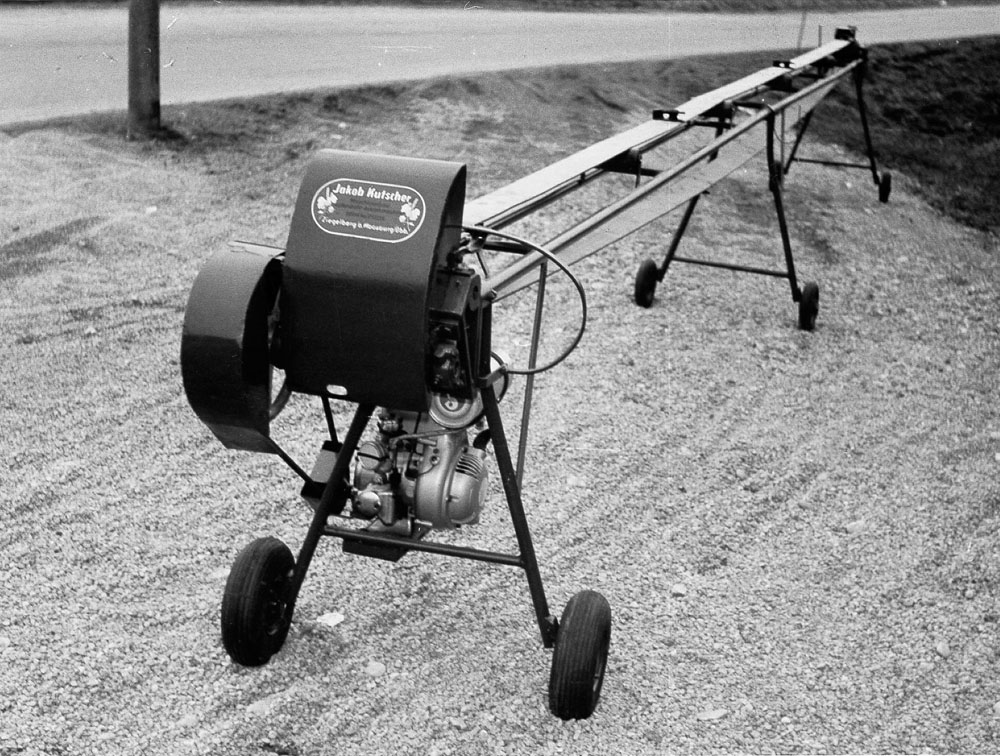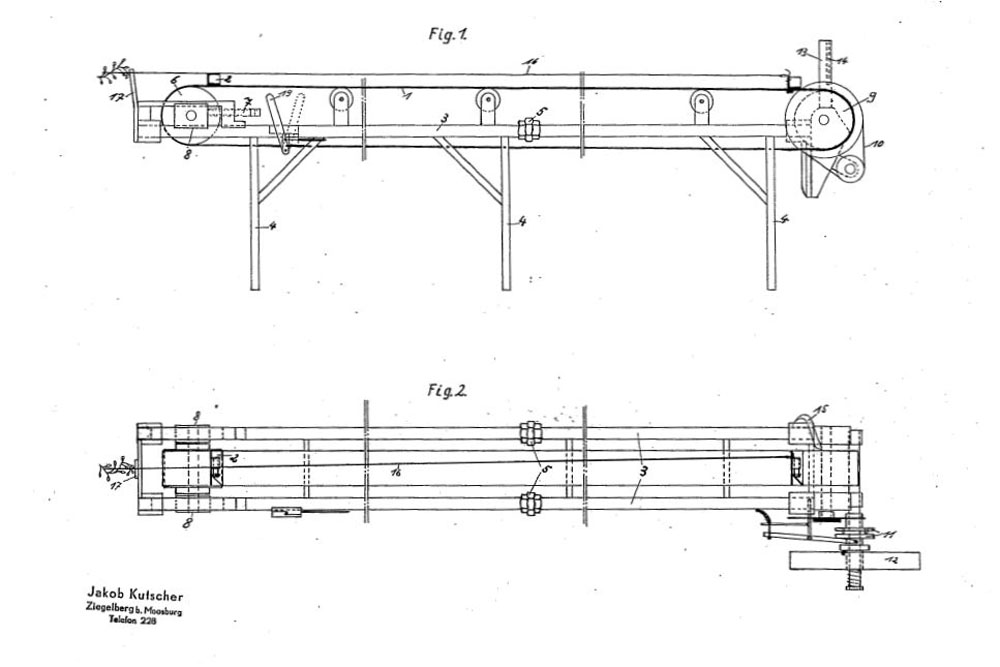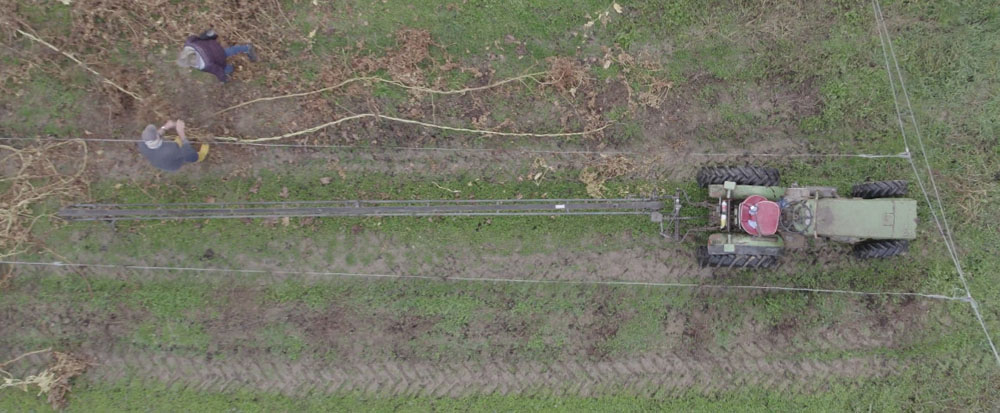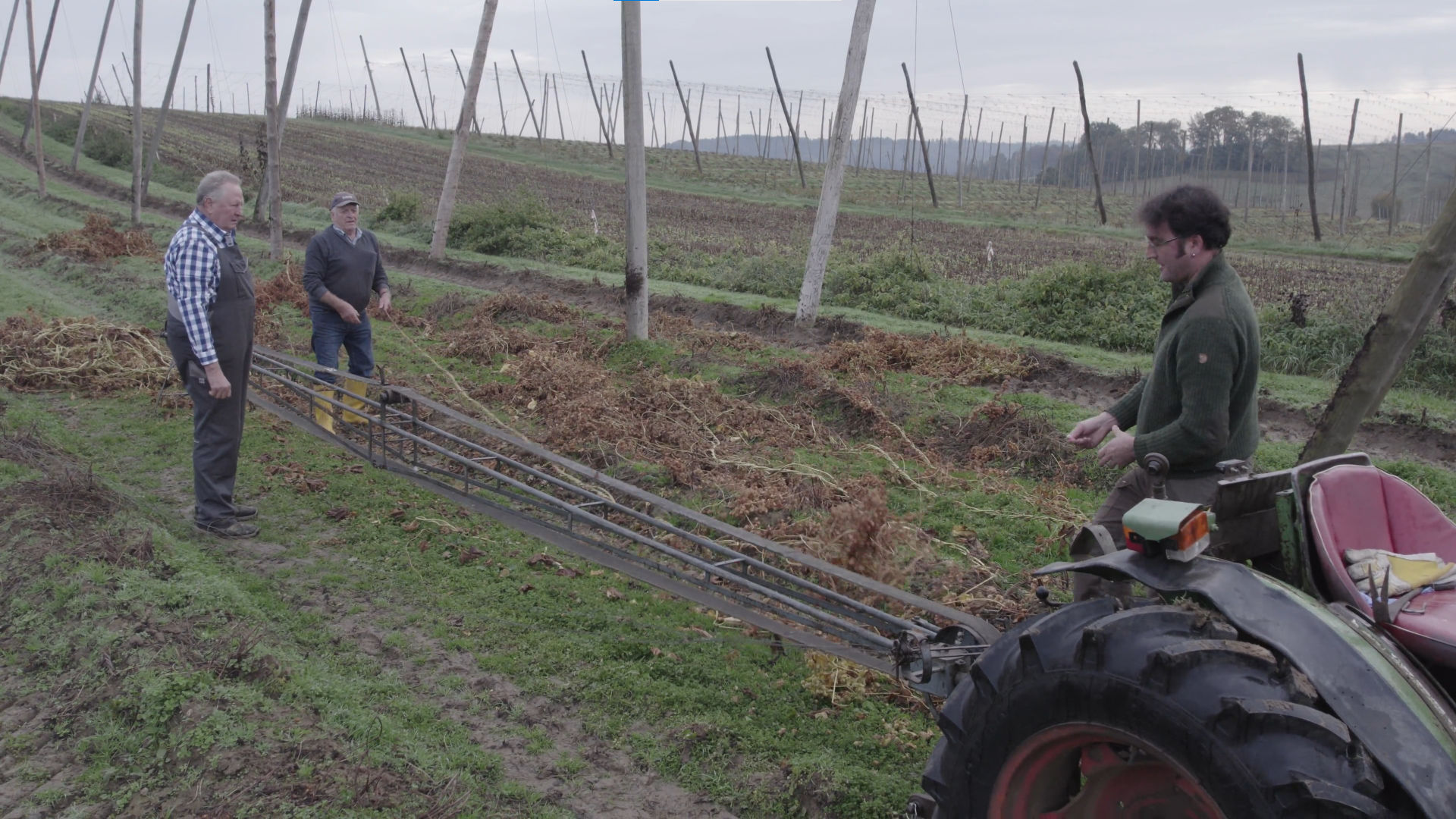A Machine for extracting the wires
Of coincidences, lockdowns and mysterious devices
By Christoph Pinzl
Until the advent of the picking machine in the 1950s, the wires were pulled out of the hop bines every fall after the harvest. So that they could be used again next spring. By hand. It was laborious, dirty and unpopular. And once the subject of a blog post.
After the Second World War, a few resourceful designers came up with a machine that was supposed to do this tedious work for you: the wire extractor. For decades, such a device lay dormant in our depot. Virtually undiscovered. The individual parts were visible to us, of course. But we didn’t know what they were good for.

The wire drawing machine from Jakob Kutscher, Zieglberg, in the version with Sachs engine. Photo taken around 1958.
Until chance and the pandemic put us on the right track. While Covid-19 was raging, we finally had a little time to spare and put the machine together like a jigsaw puzzle. We gradually pulled the individual parts out of every corner of our depots. As befits a museum, they should at least have been numbered and photographed. However, after several jumbled moves of our museum collections over the years, this had unfortunately fallen by the wayside. And so it took enough muse and detective work during a lockdown to bring the mysterious machine back to life.
And where that wasn’t enough, a bit of luck and chance had to help. After assembling it, we still didn’t quite understand what the mysterious, long device was supposed to be good for. Until a club member told us about it at the local inn. And, unbelievably, a member of the regulars’ table got in touch to say that this was his machine that we had found. A wire extracting machine. He gave it to the museum 35 years ago.

From the patent specification of Jakob Kutscher, 1957.
Anyway, we asked the previous owner, Georg Schmid , to describe exactly how the thing worked. Why his family bought it back then. What had to be observed. Why it wasn’t in operation for too long. After that, it was clear that a find like this was crying out to be documented on film afterwards. Which was not so easy. Because there are no more hops growing up the old, reusable zinc wires. Such wires disappeared with the introduction of the picking machine.
So we first had to hang a few hop bines with the old wire in the spring. Conveniently, right in front of our museum in our own hop garden. In the fall, the time had come. To make the whole thing look a little more authentic, we cut off all the vines and drove out to the next villiage to an empty hop garden. The filming took place there. Not one hundred percent true to the original, because we would have had to harvest all the hop cones first.But in any case, you can now see once again how the old wire extracting machine does its job.

Bird’s eye view of our machine, 2022.
Not without danger. Nowadays, the insurance association would certainly have serious concerns about occupational safety. But in the 1950s, nobody was interested in such things. Georg Schmid, still a boy at the time, told us how the wires at his home were first stripped by temporary workers in return for payment. How his father then took over this work. And when he could no longer do it due to illness, the wire extracting machine came to the farm. That must have been in the mid-1950s.
It was no longer possible to find out the exact manufacturer. The engineering company Jakob Kutscher from Zieglberg, near Moosburg, was still advertising a very similar machine in 1958. Kutscher supplied it in two versions: with PTO drive (like ours) and with a stationary Sachs engine. The design was very similar to our machine, but a little different. Perhaps a successor. Or the Zieglbergers were “inspired” by our predecessor. Whatever the case may be. The purchase price is no longer known. The machine was probably not cheap. Kutscher also applied for utility model protection for it in 1957.
The wire drawing machine will be on permanent display in our new show depot. Accompanied by the film recordings that we made afterwards.
